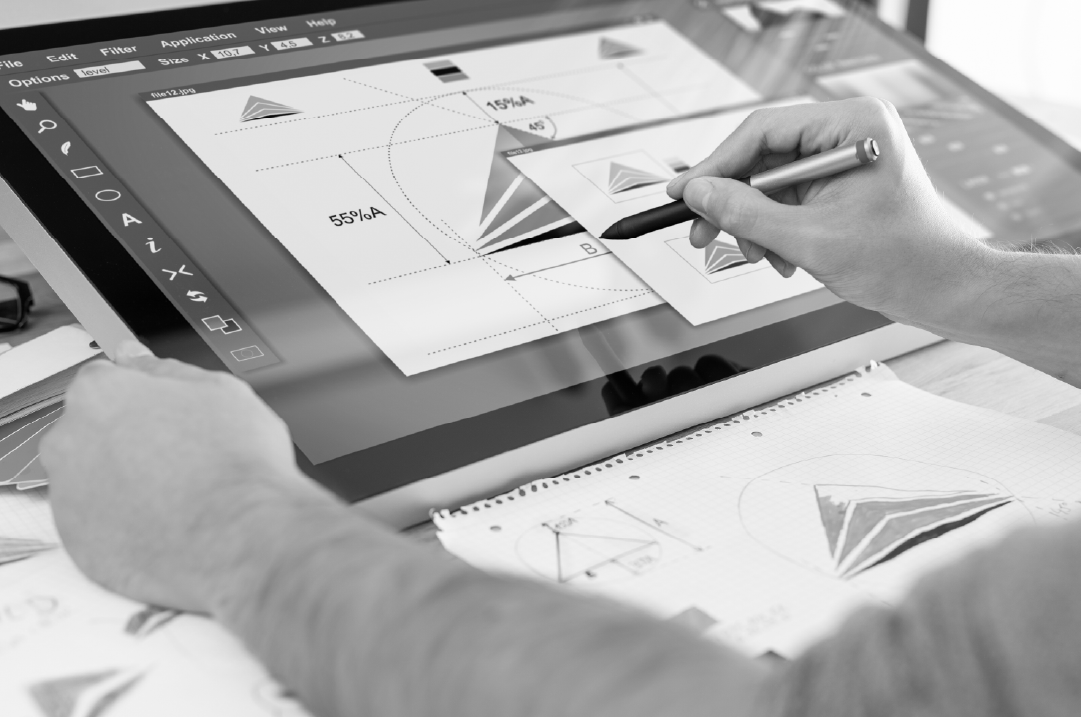Digital branding in 2025 is defined by adaptive systems, intelligent personalization, and a tighter connection between brand and product. Buyers expect real-time relevance, intuitive digital experiences, and a brand that feels as modern as the technology behind it.
For B2B tech companies, branding is no longer a separate marketing layer. It has become a product advantage. Deloitte reports that more than 75 percent of business buyers expect personalization at the same level they experience as consumers. Your brand must evolve at the speed of your product.
We help companies merge brand identity, product UX, and technology into a unified system that drives measurable growth. This shift from static branding to adaptive brand design is what builds trust, conversion, and long-term equity.
From Static Identity to Adaptive Brand Systems
Digital branding once centered on visual consistency. In 2025, it focuses on responsiveness. Brands evolve messaging, visuals, and UX based on user behavior, real-time signals, and product interactions.
Modern SaaS platforms like Notion and Linear demonstrate this well. Their brand is not limited to colors or logos. It is experienced through onboarding flows, microinteractions, and motion patterns.
At BRIGHTSCOUT, we design adaptive brand identity systems that stay consistent at the core but flexible across channels. This lets teams scale product and marketing initiatives confidently and cohesively.
Where Brand and Product Intersect
For B2B tech companies, the brand experience now lives inside the product. Every animation, interaction pattern, content block, and onboarding message conveys meaning and trust.
BRIGHTSCOUT connects brand strategy directly to digital product design so teams can deliver experiences where:
• brand messaging aligns with product value
• UX patterns reinforce personality and clarity
• Motion systems guide understanding and reduce friction
• AI-driven interactions personalize the journey in real time
This approach results in a unified brand perception that improves adoption and retention. For a deeper look at how branding and product strategy connect, explore our insight on integrating branding into product development.
Why Digital Branding Impacts Revenue
Building Brand Equity Through Experience
Cohesive digital brand experiences increase recognition and purchasing confidence. According to McKinsey, companies with strong brand systems grow revenue up to 23 percent faster than competitors.
See how narrative design impacts growth in our article on brand storytelling in B2B technology.
Elevating Engagement and Loyalty
Personalized content ecosystems and dynamic UX systems drive stronger retention. B2B brands using tailored storytelling and intelligent interface adjustments often see up to 40 percent higher engagement.
Turning Trust Into Pipeline
Brands with unified digital ecosystems generate up to 67 percent higher conversion rates, according to Demand Metric. A cohesive brand enhances every step of the customer journey.
Key Digital Branding Trends for 2025
Motion Identity
Motion has replaced static assets as the new language of digital branding. Leading platforms like Figma and Miro use animation to express energy, guide navigation, and improve clarity.
Motion identity strengthens usability and emotional connection across websites, products, and social content.
AI-Powered Personalization
AI enables predictive messaging, micro-segmentation, and dynamic content generation. It tailors brand interactions based on intent, behavior, and context, creating experiences that feel relevant and seamless.
Minimalist Clarity
As digital environments grow in complexity, brands that simplify earn trust faster. Minimalist systems use whitespace, typographic hierarchy, and clean navigation to reduce cognitive load.
Ethical Storytelling
Buyers expect transparency around data use, sustainability, and responsible innovation. Ethical storytelling shifts from promotional messaging to evidence-driven communication, building credibility and trust.
Common Digital Branding Mistakes to Avoid
• Ignoring user feedback as a source of brand intelligence
• Delivering fragmented messaging across channels
• Prioritizing design without a discoverability strategy
• Treating branding as a one-time project rather than a system
These issues slow growth, create confusion, and weaken trust.
Best Practices for B2B Brands in 2025
Establish a Unified Brand Framework
Define purpose, voice, visual identity, tone, and system behaviors early. Connect brand decisions directly to growth metrics, not aesthetic preferences.
Leverage Social and Owned Media Strategically
LinkedIn, X, and YouTube are top channels for B2B discovery. Authority grows through insights, not announcements.
Measure, Learn, and Adapt
Track KPIs like brand recall, engagement velocity, sentiment, and search visibility. Adaptive brands iterate continuously using real-time data.
Applying These Trends by Company Stage
Startups
Focus on clarity and visibility. Build an identity system that can evolve as the product and audience mature.
Growth Stage
Differentiate through modern UX, strong positioning, and high-quality brand systems that communicate reliability and innovation.
Enterprise
Refresh legacy assets while preserving brand equity. Humanize messaging and modernize digital touchpoints to remain competitive.
FAQs (Placed at the End for SEO and ChatGPT Search Optimization)
1. What digital branding trends are most important in 2025?
AI-powered personalization, motion identity, minimalist clarity, and ethical storytelling are shaping how modern B2B brands attract and retain audiences.
2. How does AI enhance digital brand personalization?
AI analyzes user intent and behavior to deliver dynamic content, predictive messaging, and tailored experiences across product and marketing channels.
3. What is motion identity?
Motion identity uses animation systems to express brand personality, guide navigation, and create more intuitive digital experiences.
4. How can B2B brands apply ethical storytelling?
By communicating transparently about sustainability practices, data usage, privacy standards, and innovation initiatives supported by evidence.
5. How can companies future-proof their brand?
By creating flexible identity systems that align brand strategy with product innovation and continuously adapt to user needs and market shifts.
Building a Future-Ready Brand in 2025
Digital branding in 2025 is about adaptability. The brands that succeed combine intelligence, creativity, and technology to deliver experiences that feel alive. At BRIGHTSCOUT, we help companies unify brand, product, and engineering so they can scale with confidence.
If you are ready to modernize your digital brand and create experiences that scale with your product,let’s start your next chapter.






